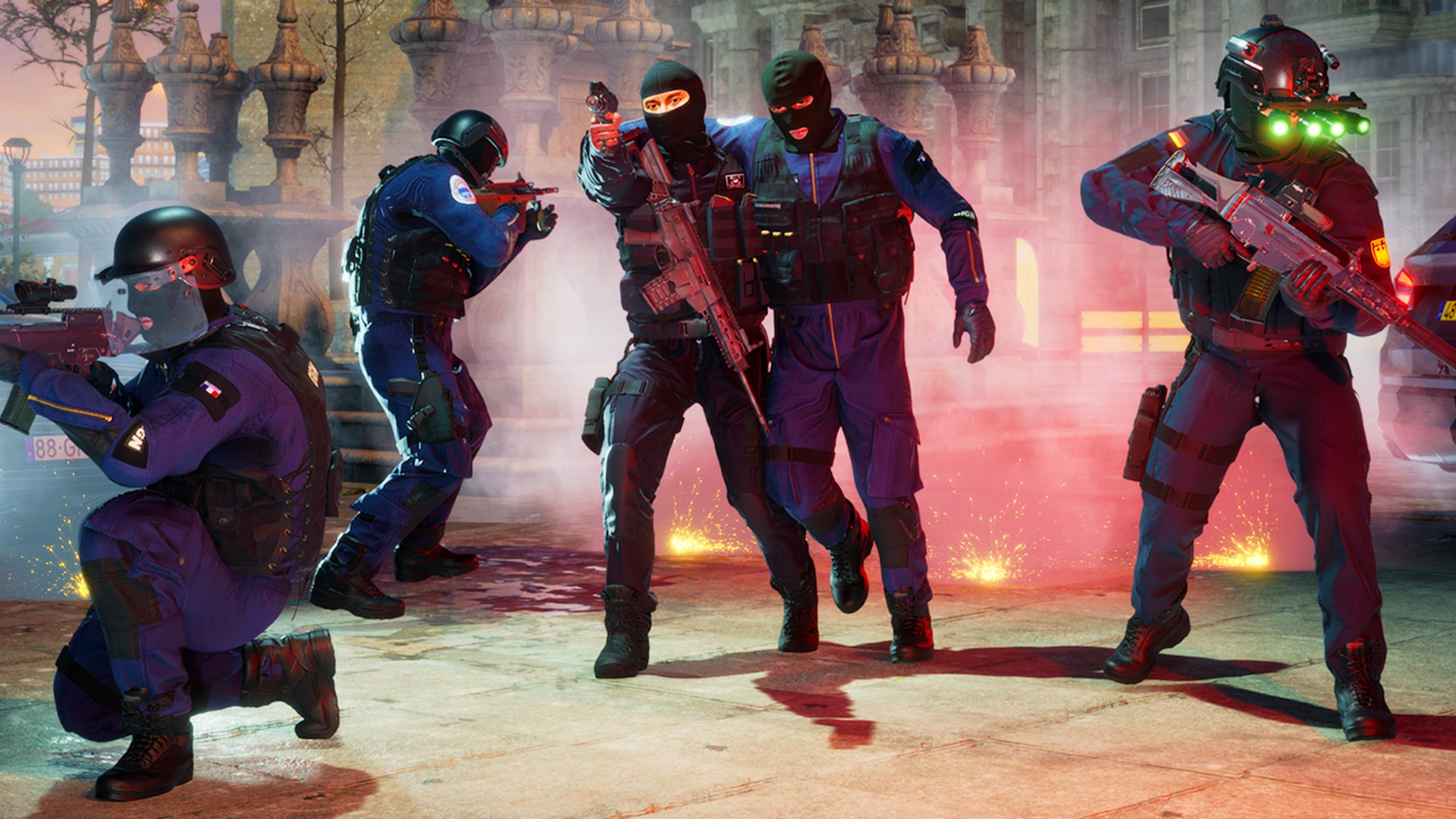Call of Duty 4 has one of the best and most influential multiplayer modes in the history of shooters. But its perks and progression system – unlock new weapons and abilities by earning XP, Prestige, then start over once you hit the max level – also represents a dubious inflection point in the FPS genre. It’s not as if grind, and earning rewards for grind, were completely novel concepts in shooters in 2007. The original Doom has par completion times on each end-of-level screen, and, back in the game’s heyday, if you played a mission over and over and over again, and got your record down, you could have earned a place on the Compet-n leaderboards. Practicing, perfecting, and speedrunning through levels in Goldeneye is how you unlock cheats. In dozens of abstract forms, the grind-and-reward dynamic is as old as videogames themselves.
But Modern Warfare makes it much more tangible. It distinguishes and quantifies the transaction, and tells players precisely how much grind – “reach level 19…” – is necessary for the reward – “…to unlock the M60E4”. 18 years later, and every major multiplayer FPS game is designed around its unlockable items, character levels, seasonal challenges, and various other digital obtainables – it’s all about player retention, and breadcrumbing (often meaningless) little incentives to keep people online.
Ignoring any sinister commercial motives, these types of shooters are an ever-decreasing circle in terms of creativity and imagination: if developers have already construed the most efficient forms of psychological malleation to keep players attached to their games, and if maintaining that attachment is their central goal, then they are always going to make games that exist within and serve that model and purpose. When’s the last time you played a new multiplayer FPS that felt original, and like if you took away the unlockables and the tiers and the rewards, it would still offer you something meaningful?

Minh Le, better known as ‘Gooseman,’ co-created Counter-Strike when he was 20 years old. Originally a mod for the first Half-Life, the game, and Le, were quickly snapped up by Valve. Six years later, Le left to create and oversee the now-defunct Tactical Intervention. After that, he worked with Facepunch on Rust and then Pearl Abyss on the MMORPG Black Desert Online. Now, a full quarter of a century since CS 1.0, Le has returned to the world of multiplayer shooters. Alongside the team at Ultimo Ratio, he’s designing and building a new, co-op, fully PvE FPS called Alpha Response.
Playing as an elite SWAT team, you and three companions spawn into a map – at the moment, during early access, there are two, both based on the Portuguese city of Porto. Your commander gives you a mission. Sometimes it’s a hostage rescue. Other times, it’s bomb defusal, or defending armored payroll vans that have been run off the road. You all begin with the same weapon loadout and cooperate to blow away waves of enemies and complete the objectives. Once, say, all the bombs are defused, your commander gets on the radio again – elsewhere in the city, a VIP is under attack and needs an escort.
Like in Counter-Strike, you use the ‘cash’ you’ve earned during the current round to buy new weapons, replace armor and health syringes, and restock your ammo. The whole team piles into a squad car and floors it to the next goal. But this isn’t a hardcore, tactical shooter – this isn’t Ready or Not. Stylistically, Alpha Response is closer to the great lightgun games of the ’90s: Time Crisis, Virtua Cop, Silent Scope, Lethal Enforcers. The colors are vibrant. The guns are deafening. The death animations are spectacular. The gore is abundant. It’s fast. It’s designed for quickfire matches, a pick-up-and-play-style shooter that you can enjoy either co-op or solo for 60 minutes at a time.

There are no microtransactions, and it’s not free to play. While there is a level-up system, almost all of the weapons are available from the start, and you don’t have perks, or loadouts, or tier-guarded skins. The joy of Alpha Response has absolutely nothing to do with what you unlock. It’s not about the ‘metagame’. It’s about the game.
“I don’t like those games where you have to log into all these different accounts and get all these different currencies,” Le explains. “I feel like that’s really for games that want to suck time from the player. This whole concept of ‘player retention’ that a lot of triple-A games are focused on, I feel that’s not a very healthy way to go about things. I’m respectful of the player’s time. I don’t really enjoy making people grind to unlock things.
“I feel like if a player comes back, it should be because they really want to play the missions and they enjoy the actual game, not for the grinding. If someone plays our game for maybe ten hours and then puts it away, that’s a success. I don’t want people to play for 100 hours.”

By the time Le joined Ultimo Ratio, the fundamental idea for Alpha Response was already in place. Partly modeled on Payday, it was always meant to be a co-op shooter with large maps. But it needed extra structure. Over the last two years, Le and the team have taken their shared design ethics and given them shape.
“I asked if we could make Alpha Response a little more like Counter-Strike,” Le says, “especially with how weapon progression works, because that would fit well with this kind of game. We’ve managed to incorporate elements from Payday and Counter-Strike, but also from Left 4 Dead. We’re also fans of Ready or Not and some of the tactical shooters, but we wanted to get away from those in terms of the firefights being a bit more interesting. In those types of games, the encounters are really about whoever has the best reflexes. We wanted extra dimensions.
“We’re trying to target an audience that’s a little bit older, people who enjoyed arcade shooters. A lot of our developers are in their early 30s. Because of that, the game is influenced by a lot of stuff we played in the past, like old Ghost Recon and Rainbow Six Vegas. We’re kind of old school in that sense. Our design is influenced by games we played in the early ’00s.”
As well as its aesthetics and its pace, Alpha Response is a departure from the current multiplayer FPS mainstream insofar as it’s totally PvE. On the contrary, it feels like part of a new wave of collaboration-based online shooters, plucky spiritual successors to Left 4 Dead that channel the energy of Valve’s zombie game into different setups and mechanics.

The progression grind fosters an inherently self-centered approach to online play – when it’s about XP, leveling up, and advancing to the next tier of guns and perks, everybody is in it for themselves. By stripping all of that out, Le and Ultimo Ratio can focus on other, more meaningful ways of making Alpha Response feel rewarding.
“When you shoot someone, you get the satisfaction of ‘he got hit,'” Le explains. “It comes down to the visual feedback and also the audio feedback, and hearing the bullets hit the enemy. It’s completely unrealistic – you would never hear the sound of that – but for me, that’s really important. I’ve always focused on making sure the feedback when you hit an enemy feels good, but also when you miss. When you hit a wall, I want to make sure the visual effects there are also as satisfying as I can make them.
“Ragdolls tend to be quite boring. Every time you kill someone, it looks the same. Games I used to play in the ’90s like Time Crisis and Virtua Cop, they stylize the death animations. I’ve always felt that was very satisfying. Some people would say it’s not very realistic, but I’ve always admired that dramatic, over-the-top feel.
“The ultimate final dream is to have lots of different levels that take place in different parts of the world,” Le continues. “I also want to take more advantage of the vehicles we have – we have them in the game right now, but we’re not using them to the fullest potential. I’d like a mission, for example, where one player is driving and the other is sniping from a helicopter. By just focusing on the core missions and the core mechanics and making those fun, we’re just hopeful that players can find some enjoyment in that and not wanting to unlock certain things.”

Though it’s been in early access since October 2024, it’s likely this is the first time you’ve heard of Alpha Response. “We made the mistake of going into early access without having enough wishlists,” Le explains, “so the Steam algorithm will put you all the way down and make it hard for people to discover you, so nobody really knew that our game existed.” But even in this early state, Alpha Response is one of the most original and enjoyable shooters you will play this year.
A major update arrived on Sunday July, helping push the game’s user count record from literally four concurrent players to 1,516. Now, there are a lot more changes that Le and Ultimo Ratio want to make. Modernizing and improving the interface is a major priority as well as adding CPU-controlled teammates for solo play and generally polishing the visuals. But still, Le suggests that Alpha Response could hit 1.0 as soon as summer 2026.
“Spending five or six years internally developing a project and then releasing it onto the world and hoping it’s going to be a success, I think that’s a very difficult thing to do,” Le concludes. “I’ve always thought the best thing to do is open it up to the community at an early, early stage.”
Source link
Alpha Response,FPS



Average Rating